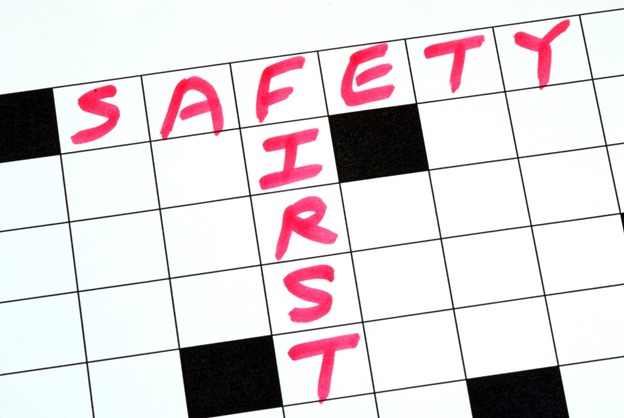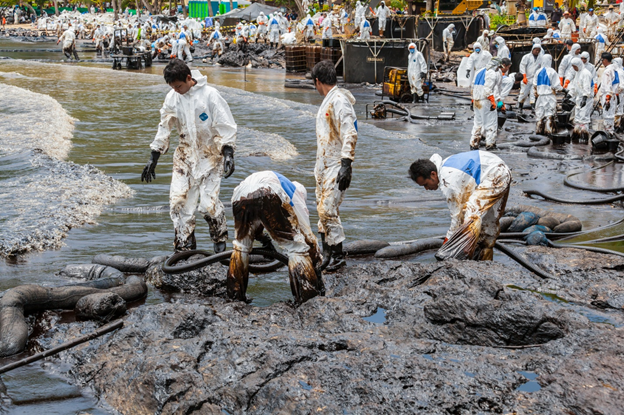What is HSE? Why is it important for the energy industry?
HSE or Health, Safety & Environment is an integrated approach to identify the potential hazards and take precautionary and preventive measures to mitigate any potential incidents' risks. HSE involves multidisciplinary functions to come together to avert or manage accidents and hazards.
The energy industry, particularly the petroleum industry, is prone to accidents due to its job nature. The equipment and machinery involved in the operations are enormous and can inflict serious injury. The world has often witnessed crude oil oozing out from wells uncontrolled and causing severe environmental issues.

Image source: johnkwan, Megapixl.com
The accidents do not only impact human lives but could also damage the natural ecosystem of the area. A proactive approach towards sound HSE management could diminish the probabilities of such accidents or incidents. The proper implementation of the HSE management could lower the severity of the incidents.
How is HSE implemented in the workplace?
The hazards and their severity are different in various industries. An oil leak from a well could damage the surrounding ecosystem, whereas any malfunction in the heavy equipment could even lead to amputations or loss of life instantaneously.
So, the companies chalk out their HSE policy based on the kind of risk their job poses and develop a system to manage the HSE challenges. The policies are written and made available to every employee for its implementation. The HSE policy must reflect the organisation's values and commitment towards employees, clients, and other stakeholders.
What are the key aspects of the HSE policy in the resource industry?
Key aspects of HSE policy can be listed as below:
- Safety of personnel and the environment is paramount and supersedes the production targets.
- Safety and environmental protection is the responsibility of every individual.
- Special training and induction should be given to each individual involved in the fieldwork.
- The organisation should provide proper personal protective equipment (PPE) to all its employees.
- All employees should be updated with the latest regulatory norms and codes.
- All incidents and accidents have to be duly reported, and a record should be maintained for the same.
- Only trained personals should be allowed to work in confined environments.
- A proper permit system should be there for performing hot jobs (welding).
The above points are general in nature and should be modified based on the State or country's work environment and regulations.
Define hazard, incident and accident.
The three terms are interlinked with each other. Hazard is a source or process that can cause harm or injury to the person engaged in the process or could lead to damage to the machinery and environment or a combination of all these.
Incidents are the events that can lead to accidents or have the potential to advance to accidents. The basic difference between hazard and incident is that incident is unplanned and had caused accidents in the past. If the operator identifies the faulting braking system during a routine check and rectifies it, then it is a hazard. If the same operator, while driving the hauling truck with loaded materials, finds out that the braking system is not working, then the situation turns into an incident.
An accident is an event that can cause injury or damage to the machinery or the environment. From the above example, the truck loses control and could cause accidents that can spill the loaded material in the surroundings, cause injury to the operator and people at the spot of the accident.
The mismatch of the three M's- Men, Material, and Method is always at the core of any accident. In any of three cases, hazard, incident or an accident, events should be reported properly, and a record should be maintained to avert such circumstances in the future.
Case Study
Deepwater Horizon accident in the Gulf of Mexico
The Deepwater Horizon accident in the Gulf of Mexico is the biggest oil spill accident that the world has witnessed so far. The rig Deepwater Horizon was operating on the BP's Macondo Prospect in the year 2010 when a sudden blow out triggered a massive fire on the rig resulting in the death of 11 people.
The oil well flowed non-stop for 87 days, leaking around 3-4 million barrels of oil in the sea. The various investigation pointed out the human error in gauging the outcome of the possible short-cuts the BP took to complete the delayed project.
The cement that was supposed to fix the casing was not done placed properly, and BP ignored the good logging operations done to check and evaluate the cement job. Further, the blow out preventer (BOP) that was supposed to contain the hydrocarbon in the well did not work.

People involved in cleaning the seacoast after the spill (Image source: Kajornyot, Megapixl.com
The huge pressure of the oil threw the drill pipes out from the well and caused an explosion on the rig, which resulted in an extensive fire.
The specialist from around the world tried continuously to control the well but was finally done on the 87th day of the accident. The impact of the spill was enormous on the marine and local environment. Thousands of birds, fish and marine creatures died. The entire fishing industry was finished in the region, and beaches became inhabitable due to the assemblage of a huge quantity of crude oil.
BP had to pay US$65 billion in penalties and compensations. The accident could have been averted if the proper implementation of the HSE policy was ensured.
 Please wait processing your request...
Please wait processing your request...